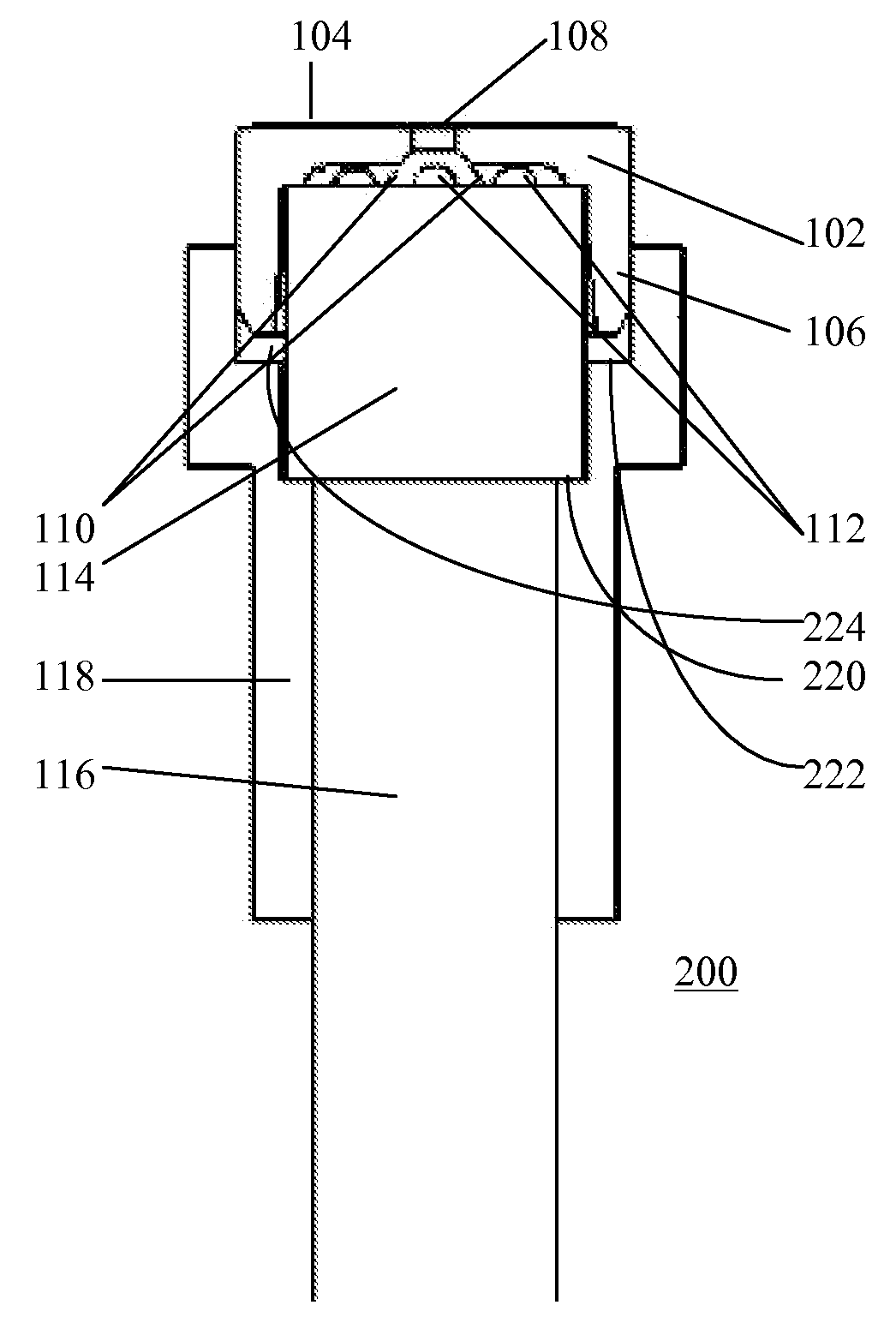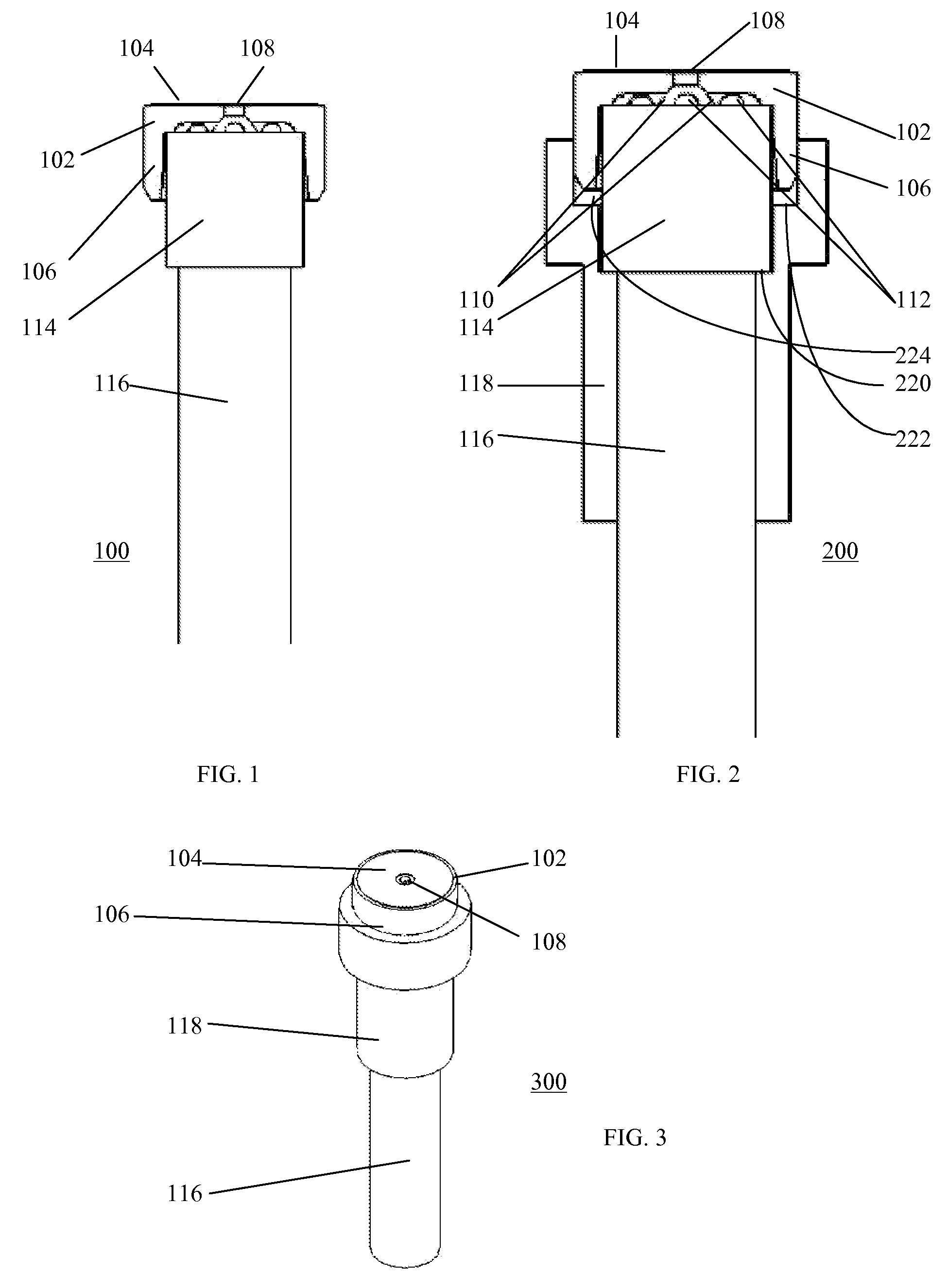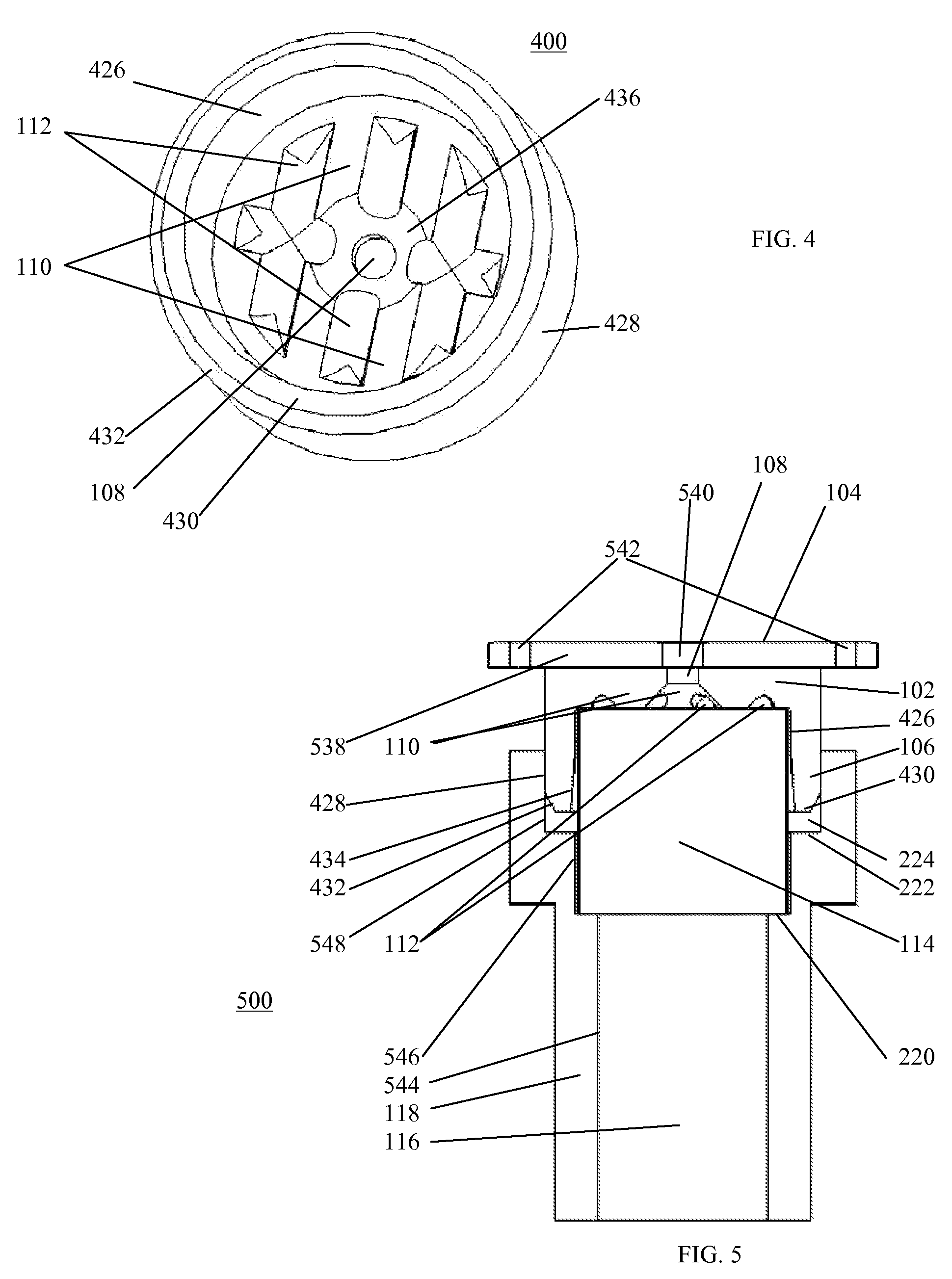Low Energy Vaporization of Liquids: Apparatus and Methods
- Summary
- Abstract
- Description
- Claims
- Application Information
AI Technical Summary
Benefits of technology
Problems solved by technology
Method used
Image
Examples
example 1
[0127]A device of the present invention was used to vaporize 40 mg of liquid feed in a testing station. The total energy consumption required in order to vaporize the 40 mg of liquid was then calculated. It was found that the heating element used in the present invention drew 16 Watts during a four-second duration a total of six times during the course of one hour. During the same 60 minutes, a fan used to disperse the vaporized liquid drew 0.6 Watts over an eight second interval six times during the hour. The power requirement of the continuously operating test apparatus that was used in the course of the study was 0.2 Watts. The total energy usage could therefore be calculated based on the contributions of: 384 Joule for the heating element; 29 Joule for the fan; and 720 Joule for the test apparatus; for a total of 1133 Joule during one hour, or 28.3 Joule / mg fragrance vaporized.
example 2
[0128]A device of the present invention and a device of the prior art were both used to vaporize the same amount of material in one hour in order to compare the energy requirements of one with the other. Thus, by using a vaporizer of the present invention, it was found that 1,133 Joules of energy were required to dispense 40 mg of fragrance in one hour. By comparison, it was found that a prior art device, S.C. Johnson® Glade Scented Oil Fan®, operating at 3.7 Watts required an hour in order to disperse the same 40 mg of fragrance, for a total energy requirement of 13,320 Joules to vaporize the same amount of material as the present invention. In other words, the prior art device required more than ten times the amount of energy as the present invention to vaporize the same amount of liquid. Stated another way, the device of the present invention was twelve times more efficient in vaporizing the same volume of liquid in the same amount of time.
[0129]The results from Example 2 above s...
example 3
[0130]In another aspect, and using a vaporizer of the present invention, it can be shown that it is possible to vaporize 40 mg / hr of un-pressurized liquid using less than 1200 Joules of energy. By analogy, therefore, it may be shown that the present invention can dispense on the order of 50 mg / hr of un-pressurized liquid using less than 1,500 Joules of energy; on the order of 60 mg / hr of liquid using less than 1,700 Joules; and on the order of 70 mg / hr of liquid using less than 2,000 Joules of energy. Each of these values represents considerable energy savings over prior art devices.
[0131]In cases where it is desired to vaporize less than 40 mg of liquid in an hour, or in order to best preserve the trueness of a fragrance delivered, the device of the present invention can be used to vaporize liquids with as little energy as 190 Joules per milligram of material. Much lower energy requirements may also be met. Thus, the device of the present invention can be used to vaporize liquids w...
PUM
 Login to View More
Login to View More Abstract
Description
Claims
Application Information
 Login to View More
Login to View More - R&D
- Intellectual Property
- Life Sciences
- Materials
- Tech Scout
- Unparalleled Data Quality
- Higher Quality Content
- 60% Fewer Hallucinations
Browse by: Latest US Patents, China's latest patents, Technical Efficacy Thesaurus, Application Domain, Technology Topic, Popular Technical Reports.
© 2025 PatSnap. All rights reserved.Legal|Privacy policy|Modern Slavery Act Transparency Statement|Sitemap|About US| Contact US: help@patsnap.com



